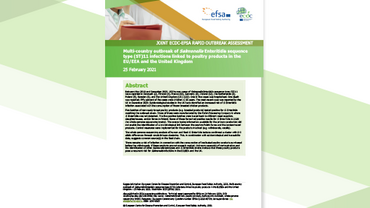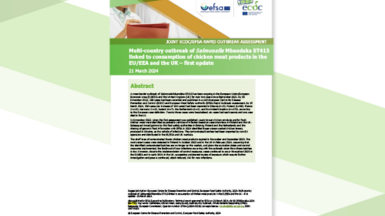Rapid risk assessment on influenza A(H7N9) China, 12 April 2013
On 31 March 2013, Chinese authorities announced the identification of a novel reassortant A(H7N9) influenza virus isolated from three unlinked cases of severe respiratory disease in eastern China. This is the first time that human infection with avian influenza virus A(H7N9) has been identified.
Since then, human cases have continued to be reported from eastern China. As of 11 April, there were 38 laboratory-confirmed cases including ten deaths reported from four bordering provinces with a concentration of cases in and around Shanghai. Cases occur sporadically, without obvious epidemiological links. There is currently no confirmed human-to-human transmission.
The updated ECDC risk assessment concludes that the risk of the disease spreading to Europe via humans or through poultry is low at this time.
Executive Summary
On 31 March 2013, Chinese authorities announced the identification of a novel reassortant A(H7N9) influenza virus isolated from three unlinked cases of severe respiratory disease in eastern China. This is the first time that human infection with avian influenza virus A(H7N9) has been identified.
In light of this, ECDC issued its initial risk assessment on 2 April.
Since then, human cases have continued to be reported from eastern China. As of 11 April, there were 38 laboratory-confirmed cases including ten deaths reported from four bordering provinces with a concentration of cases in and around Shanghai. Cases occur sporadically, without obvious epidemiological links. There is currently no confirmed human-to-human transmission.
The updated ECDC risk assessment of 12 April concludes that the risk of the disease spreading to Europe via humans or through poultry is low at this time. It lists major developments since the initial risk assessment, as well as recommendations for the EU/EEA countries.






